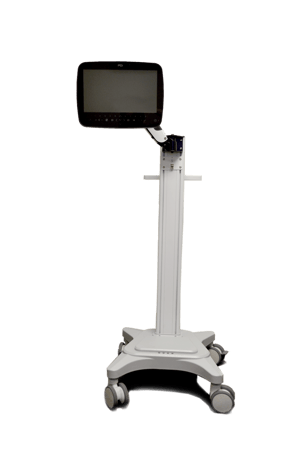Are you a patient worried about COVID-19 in your hospital room?
Now more than ever it is important for you to feel safe when going to the hospital for care. As the coronavirus continues to spread and news, updates and regulations seem to change hour-by-hour, people are becoming more concerned about how to slow the spread at home and in the hospital. Cleanliness, sanitization and safety are becoming important parts of the patient experience.
The American Society for Healthcare Environmental Services has many guidelines for the effective cleaning, sanitization and disinfection of patient rooms. The environmental services staff at your hospital is responsible to have completely cleaned your room before you arrive, and they will likely do some additional cleaning during your time there, as well.
Steps to Decontaminate Patient Rooms
In any hospital room, there are a number of things that need to be cleaned, especially in between patients.
- All surfaces of the bed, including the frame, headboard, handrails and footboard.
- TV remote and nurse call system. (These should be cleaned more frequently, especially if you have visitors!)
- Tabletops, phones, chairs, handles and light switches, as well as other frequently-touched items.
- Everything in the bathroom should be disinfected, and privacy curtains should be carefully removed and laundered often.
Do you realize that some patient televisions are built for infection control? Many items in the hospital room, like the patient television, are designed for infection control to ensure that patients remain safe. They are designed to be safely sanitized and protected from any liquids, blood or bodily fluid, and built using antimicrobial coatings.If your patient TV says PDi on it, rest assured it can be safely sanitized with up to 5% chlorine bleach solution using the guidelines found here.
Ask Questions
As a patient, you have a right to know what’s happening in your room. Ask your care providers about the cleanliness of your room. How frequently will it be cleaned? Or how about the technology in the room - is it able to be cleaned daily without losing quality? Is your TV made with antimicrobial plastics? What about other plastic pieces in your room that you’ll be interacting with frequently?
Make sure you understand how to protect yourself, too. Are there things you can do to help keep your room clean? Maybe it’s a good idea to remove your slippers or socks before putting your feet up on your bed. Perhaps you’d like to ask whoever’s delivering your meal to wipe your overbed table off before they place your tray on it. Try to be your own best advocate as much as possible.
Cleaning Medical Carts Too

- Telehealth is increasing in popularity.
- Hospitals are becoming busier and busier.
- Patients enjoy many different ways of being distracted.
These three statements have something in common: these needs can all be met with medical mobile cart solutions.
Whether you use a mobile cart with a television for telehealth visits, translation services or entertainment or choose a full mobile gaming system, being able to wheel the system where you need it is a great way to provide temporary solutions and improve the patient experience. It’s important, though, that these mobile carts are built for stringent healthcare use and cleaning standards by a trusted healthcare supplier, like PDi. Mobile carts must be well sanitized before they’re taken to the next patient. The carts should be durable enough to withstand repeated cleanings without damaging the technology.
Disinfecting the hospital room has always been an important part of healthcare, but it has increased significantly in light of the recent COVID-19 pandemic. Hospitals and healthcare facilities staff are certainly taking this very seriously. It’s always a good idea for patients to be informed too. You can speak up if you feel like something isn’t as clean as you’d like, or ask questions to make sure you understand so that your patient experience is excellent.
